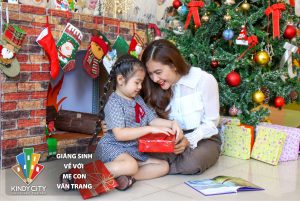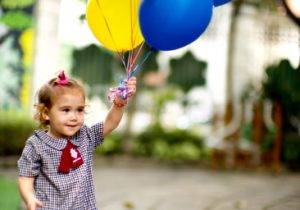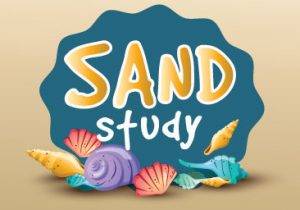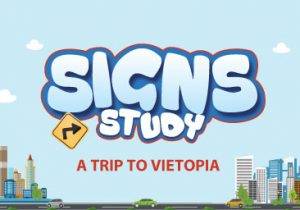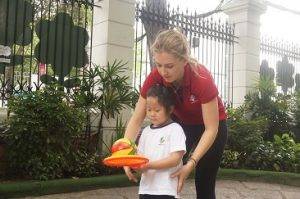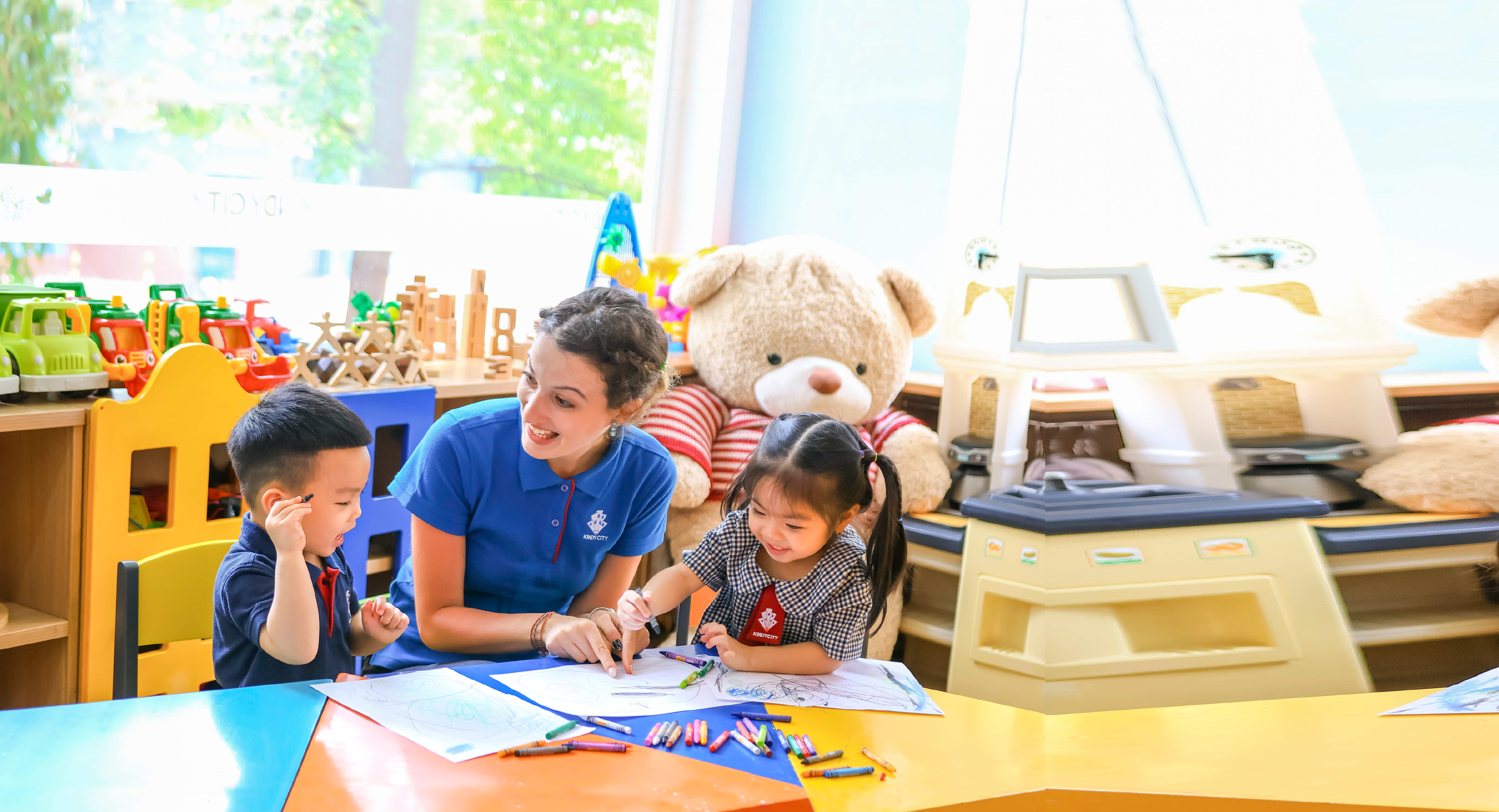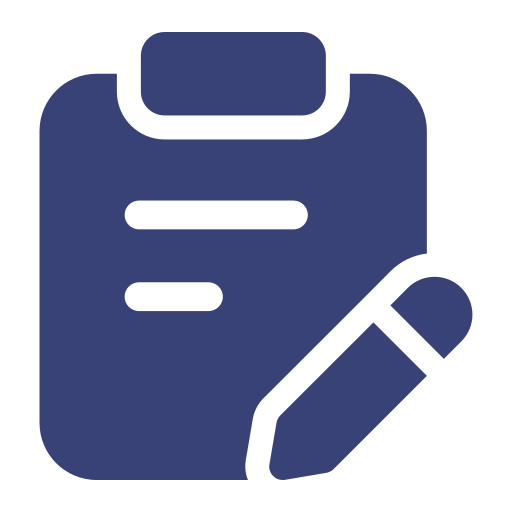Health is person’s greatest possession. Therefore, a healthy child with good physical, mental and social development is always a wish for all parents. Moreover, “The future world is in children’s hands”, taking care of children’s health, preventing accidents, wounds and assuring safety for children are not only essential things to parents and preschool teachers but also the mission for the entire society.

All the teachers and specialized staff, principals took part in the training course
Recently on the 19 September, Kindy City International Preschool coordinated with the College of Pedagogy Central III to organize a training course focused on professional skills “Improving Preschoolers Care Skills” under the guidance of Doctor Pham Thi Nhuan- official lecturer of College of Pedagogy Central III. Throughout the course, all teachers of Kindy City Preschool were trained and they had the opportunity to practice the following skills:
- Children’s Hygiene and Disease Prevention.
- Care and organizing skills for children.
- First Aid and Emergency Treatment for seizures and airway foreign bodies in children.
Hygiene matters or creating a child’s sleep and feeding schedule may seem simple, but if we are not trained for these logical skills, it could have a negative impact on children’s development. Especially, for those teachers who are close to children, it is required for them to have first aid and problem solving skills they should also be trained and updated regularly. By doing so, teachers will be more confident in teaching and taking care of children every day.
 |  |
Doctor Nhuan is demonstrating hand washing skill to teachers.
From that point on, teachers should take notice of important things when taking care and teaching children:
6 golden words in hand washing principles:
- Hand palm: Children rub both palms
- Backs of hands: rub the back of both hands
- Between fingers: palm to palm, fingers interlaced.
- Thumbs: rotational rubbing of right thumb clasped in left palm. Vice versa.
- Rotational rubbing: rotational rubbing backward and forward on right palm with clasped fingers. Vice versa
Treatment to nosebleeds in children
- Pinch the child’s nose using thumb and index finger
- Let a child sit up and lean slightly forward and instruct him/her to inhale by mouth
- Put an ice pack (covered with something like a wash cloth) on the child’s forehead.
Treatment to bleeding wound in children
- Wash the wound clean with running tap water, then apply hydrogen peroxide.
- Hemostatic action. Put a sterilized bandage on the wound and press until it stops bleeding.
- Get the child to the nearest Aid Station.
- Note: person that treats the wound must sanitize hands, medical tools and equipment before taking action.
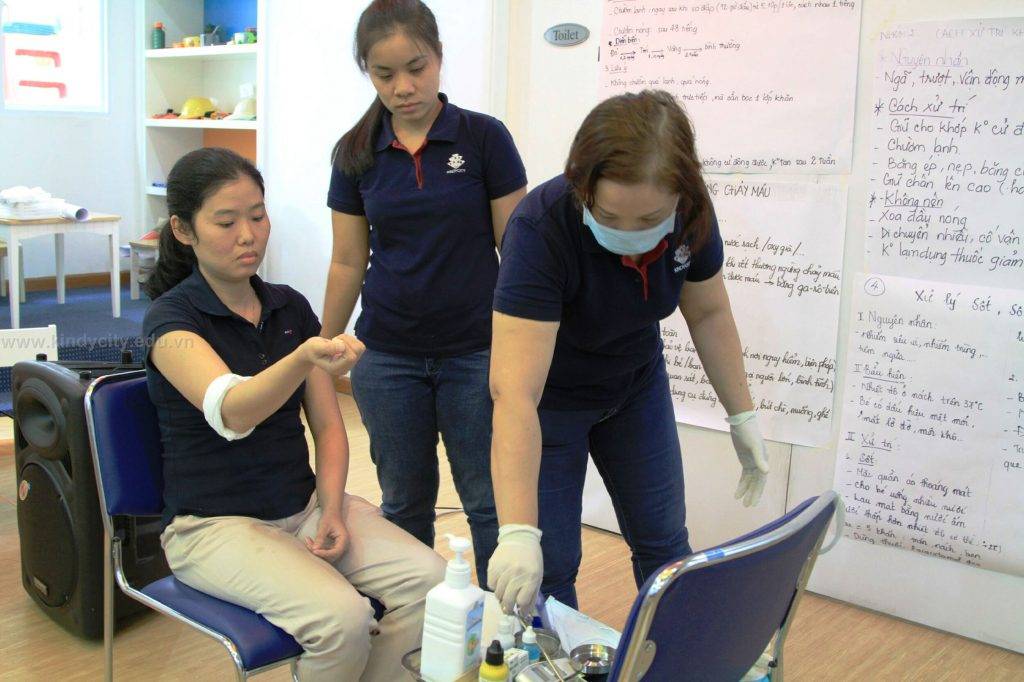 | 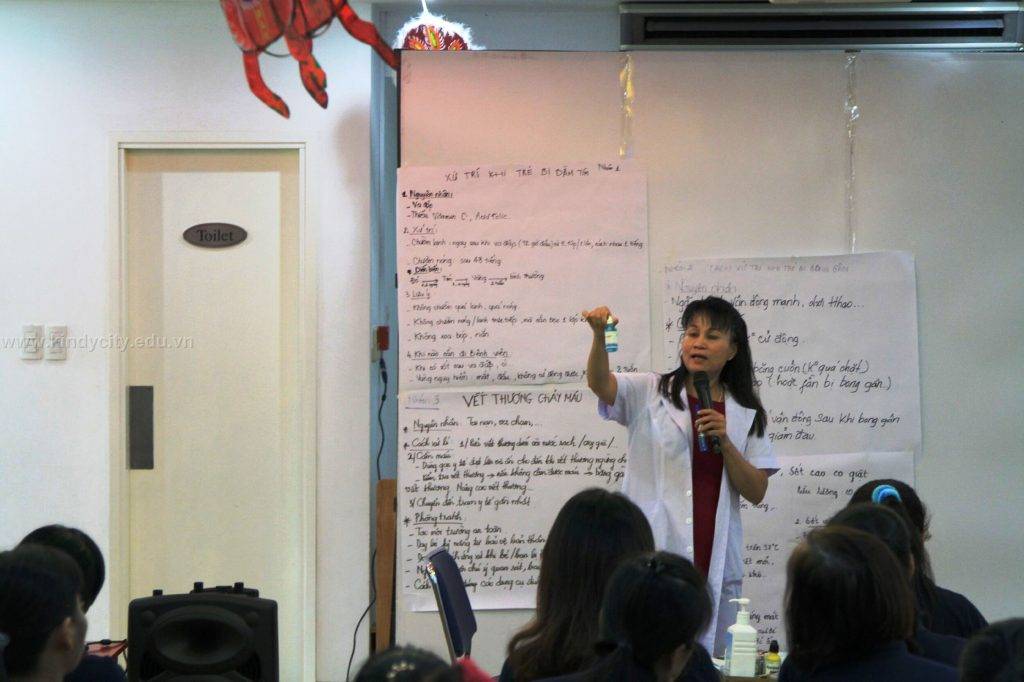 |
Teachers are practicing first aid on bleeding injury
R.I.C.E- rule in treating sprain
- R: Rest
- I: Ice
- C: Compression
- E: Elevation
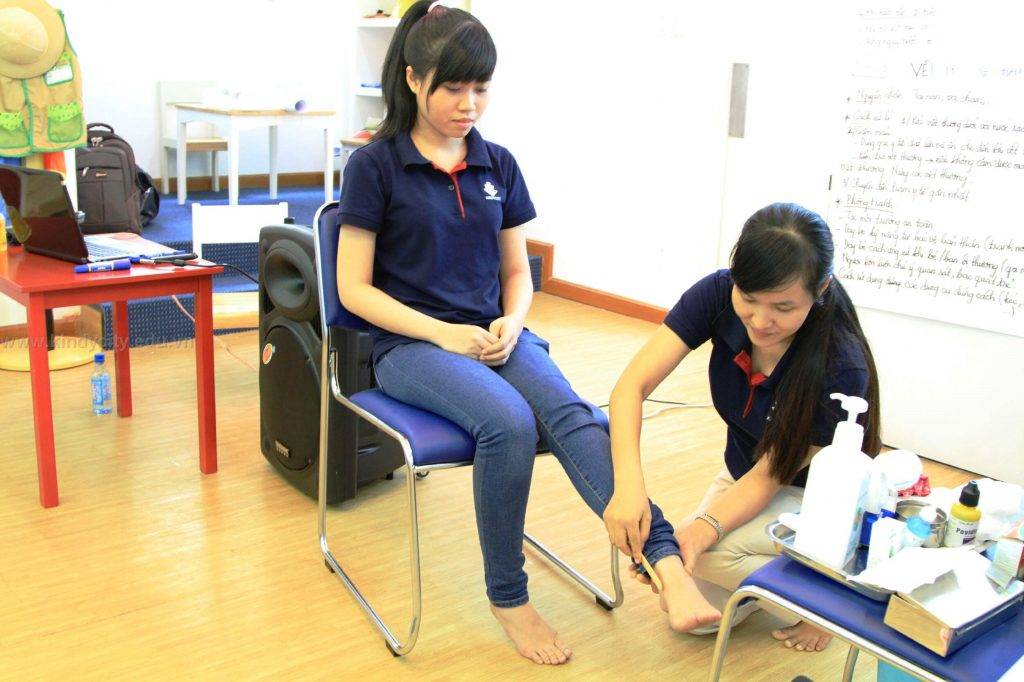
When the child has sprain, person who treats this situation need to calm the child and avoid moving him/her.
When children have high fever and convulsion, please take a note:
- Make sure your child’s clothing is loose
- Let the child drink plenty of water
- Rub the artery such as forehead, underarm, and groin with warm towel (the temperature of water must be 20C lower than that of the child’s body)
- When the child has a seizure, let she/he lie on her/his side, put a hygienic tool in his/her mouth to avoid biting tongue.
- Get the child to the nearest Aid Station.
- Do not put ice pack on the child’s forehead or give him/her lemon.
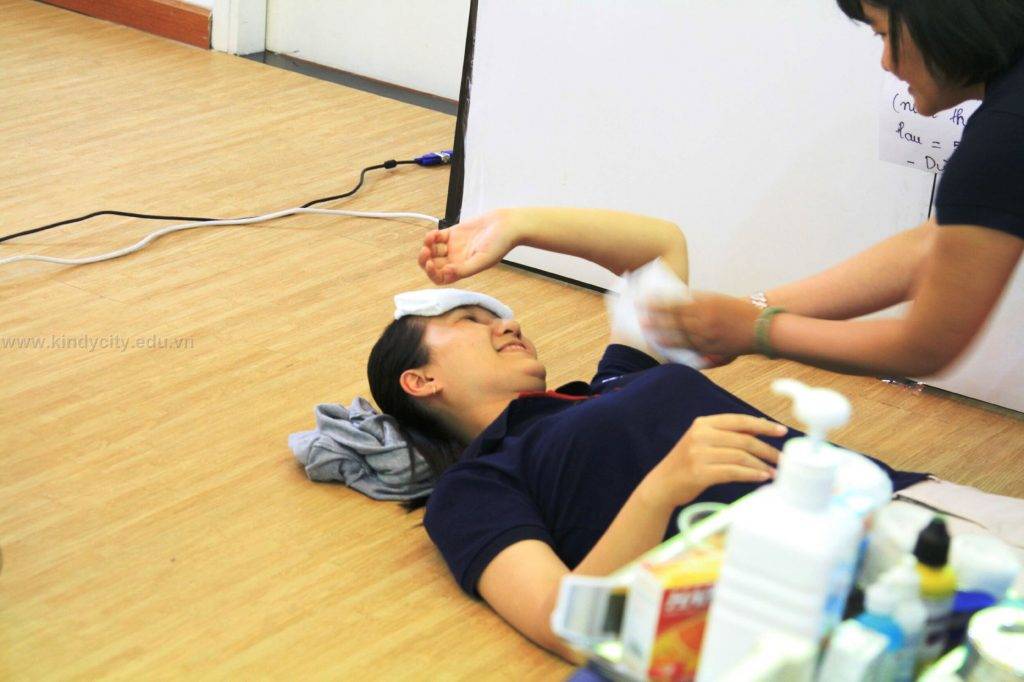 | 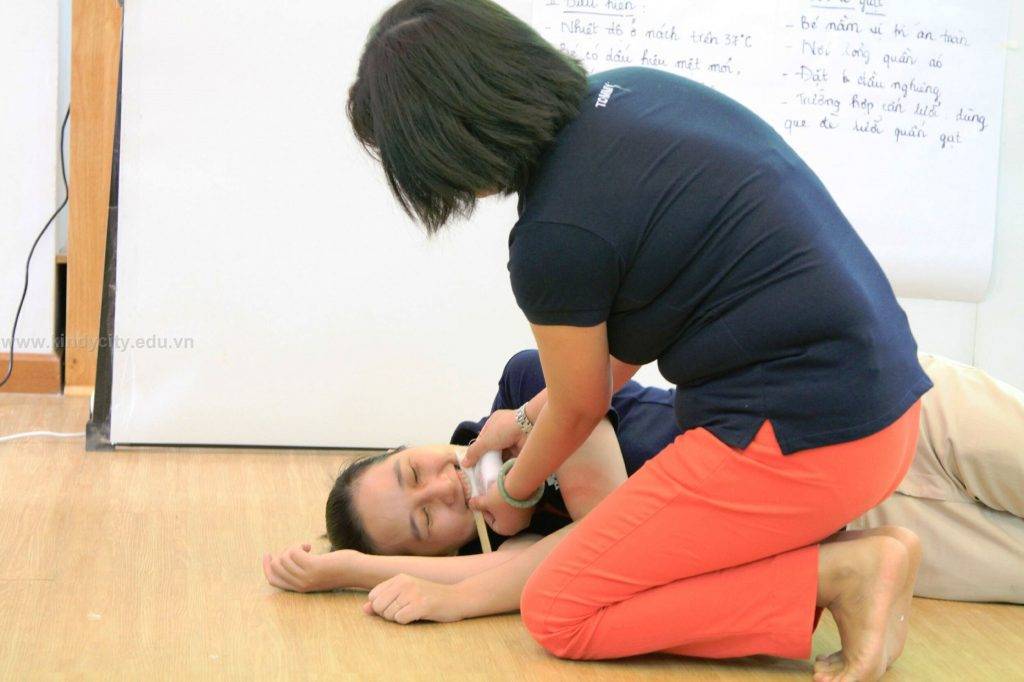 |
When the child has seizures, let he/she lie on his/her side at a safe position
Ways to deal with object stuck in airway in children aged 1-6
- “Are you ok?” If the child can reply or cough then adult take no action but guide the child himself to remove the object (by spitting…) and get the child to the nearest Aid Station afterwards.
- If the child can’t say or cough, apply Heimlich maneuver immediately. Let the child vomit the object and get him/her to the nearest Aid Station.
- If the child’s heart stops beating, then press the chest at the position of the child’s heart and apply artificial respiration until have medical assistance.
- 115 is the emergency number to remember.
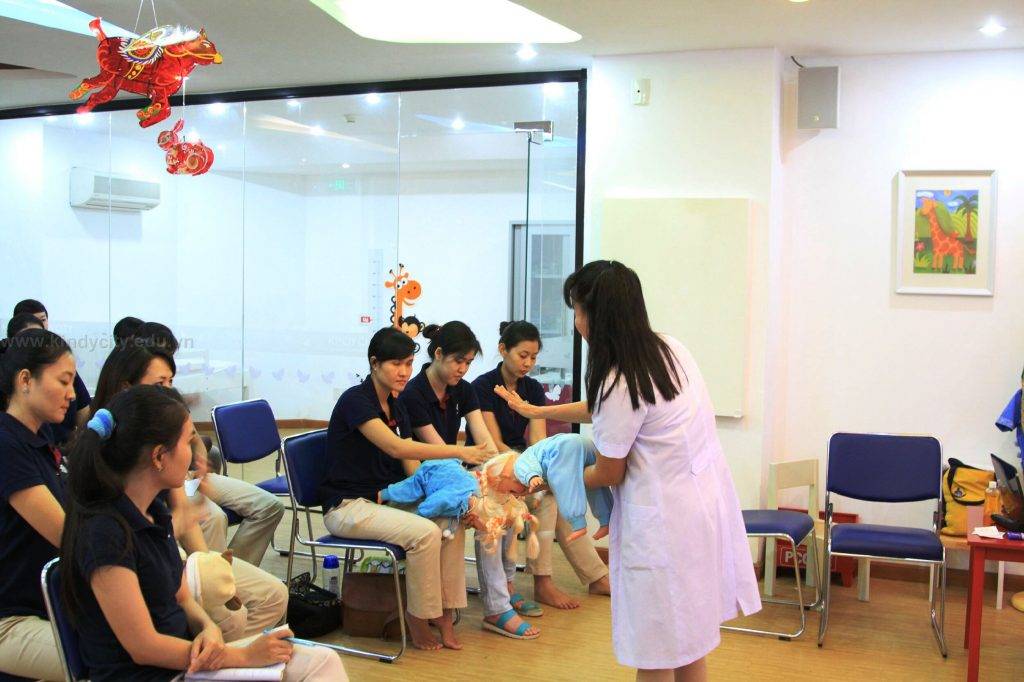 |  |
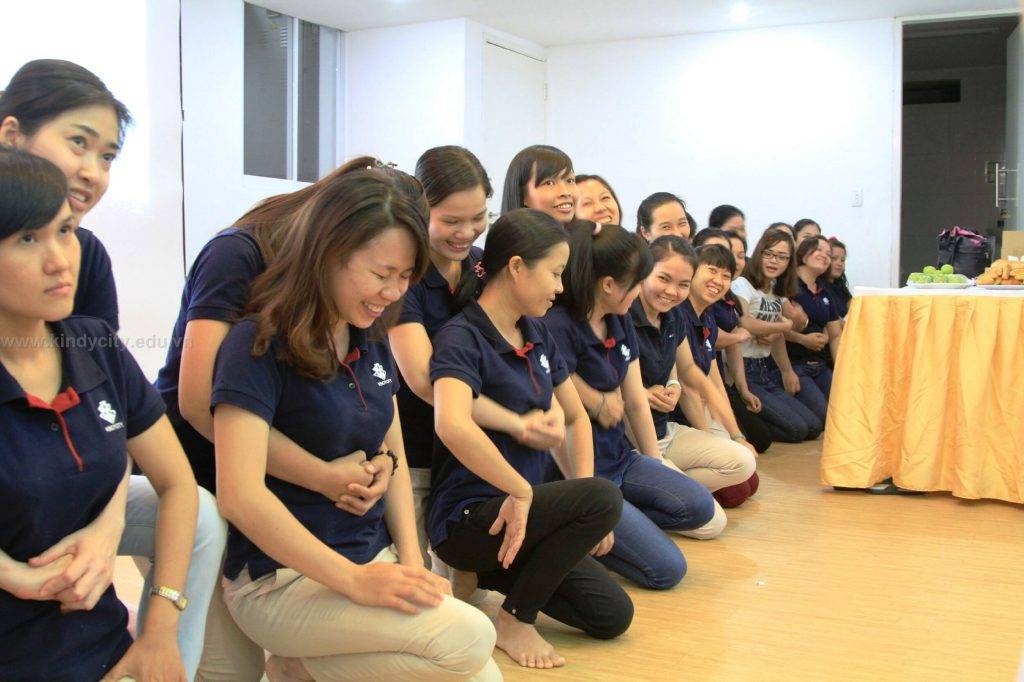 | 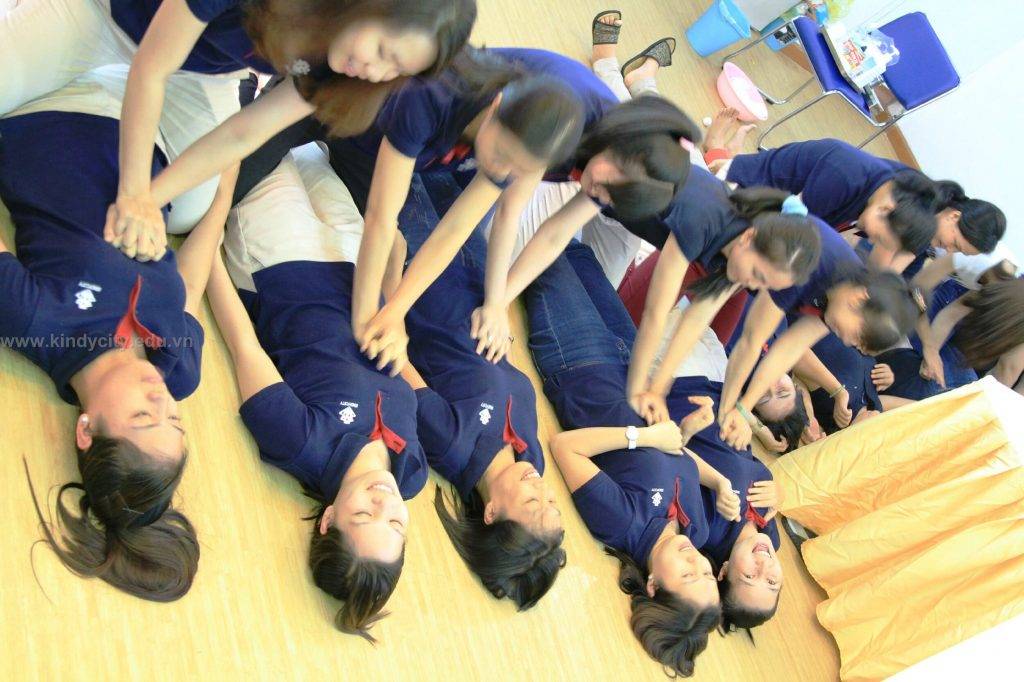 |
Applying Heimlich maneuver to help child remove the object
To wrap up the course, a teacher said:” I think these skills and solutions of practical situations are necessary to teachers like me. Thank you Kindy City for organizing this helpful course, and not just me but all teachers here we are looking forward to further opportunity to be trained for other skills and knowledge.




